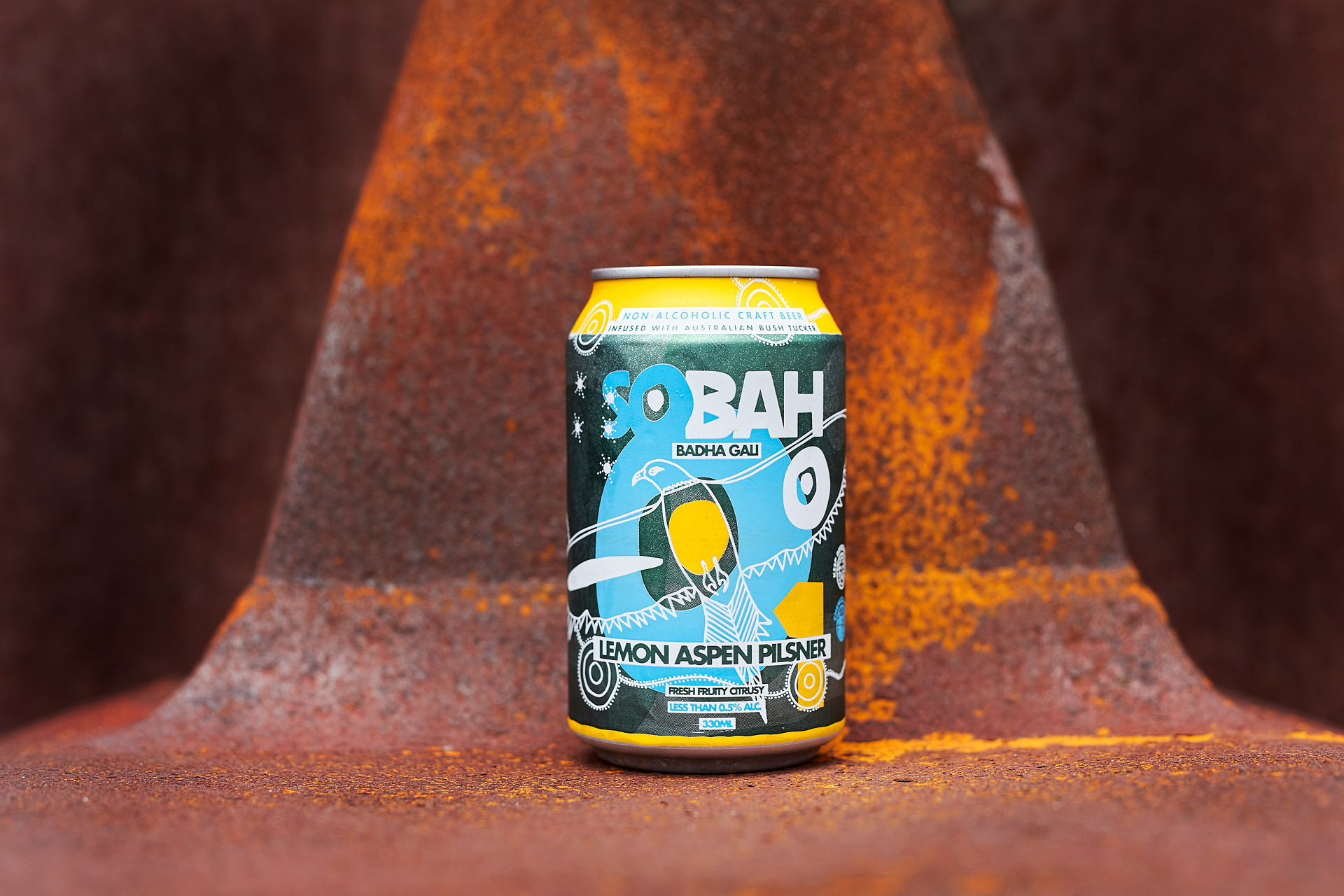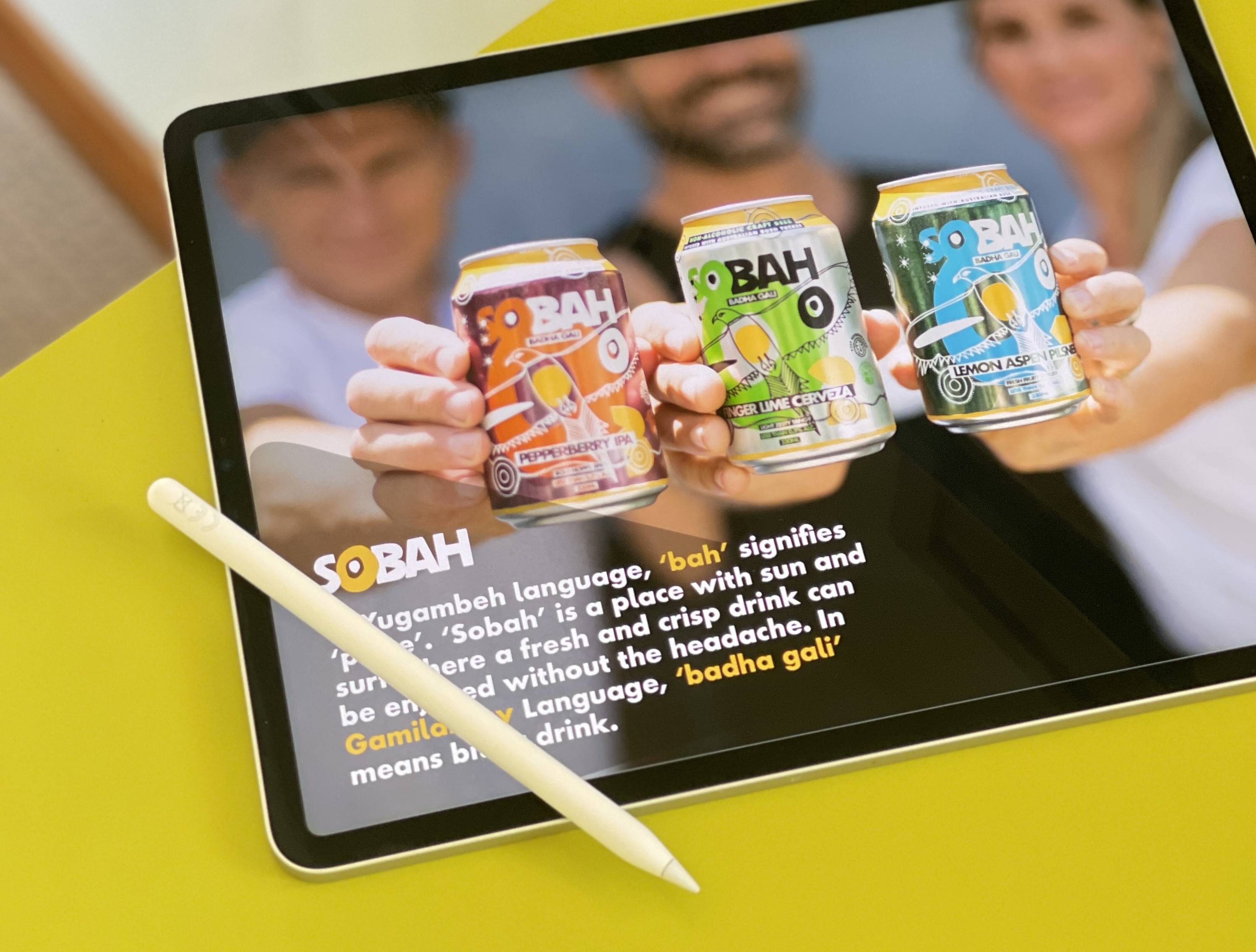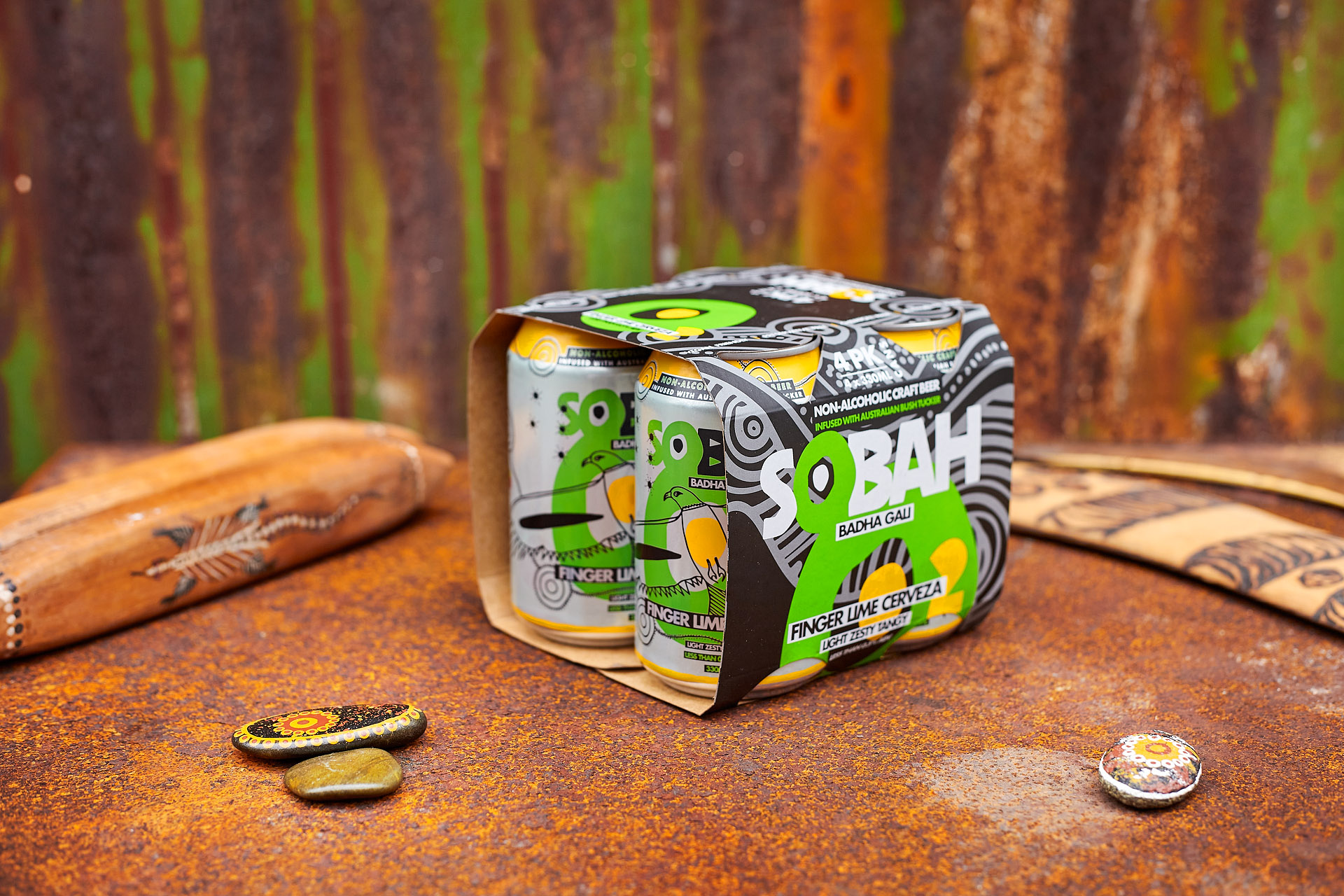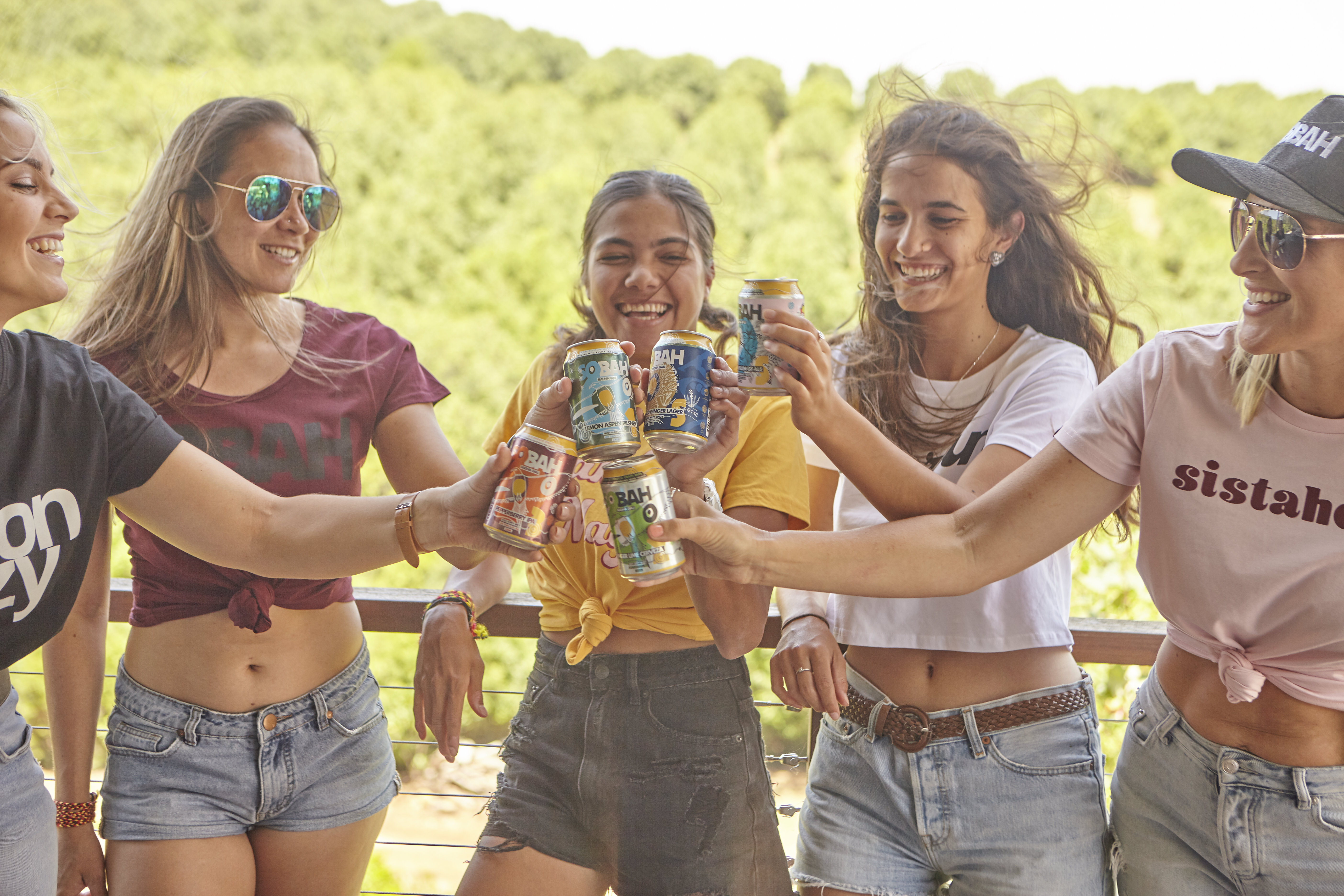A brand and communication strategy for an Aboriginal owned and led non-alcoholic beverage company.

Tristan has delivered an identity for our beverage that exactly communicates our ethos. It is culturally nuanced with a contemporary twist.
Sobah is a premium non-alcoholic craft beer infused with Australian native ingredients. It is an Aboriginal owned and led company so we are more than excited to develop the visual identity and communication strategies for this beverage. Sobah is founded by Clinton Schultz, a health and organisational psychologist working in areas such as cultural capacity training, suicide prevention, and drug and alcohol rehab, and as it turns out, Tristan Schultz’s (Relative Creative founders) brother!
Clinton says SOBAH is a play on words, obviously on the word ‘sober’. ‘Bah’ as a suffix in Yugambeh language which signifies a place. Therefore SOBAH is a place of sobriety where a truly social drink can be enjoyed. In Gamilaraay language, ‘badha gali’ means ‘bitter drink’ and is the closest translation of the word ‘beer’ into Clinton’s peoples’ language.
Protecting and promoting Aboriginal languages and culture is one of their key drives, and this is reflected in the brand’s visual identity. The wedgetail eagle is called Maliyan, a prominent Gamilaraay (Clinton and Tristan’s Aboriginal heritage) totem and the name of Clinton’s eldest son. Maliyan Dreaming, the eagle in the artwork, comes from an artwork by Gamilaraay artist Jason Passfield. The remaining communication strategy is by Tristan. A key element of the identity is the ‘yellow dot’ representing the Aboriginal Flag, beer, the strong heart of the eagle and importantly, a numeric figure of ‘0’ for zero percent alcohol.
Sobah ingredients are sourced ethically throughout Australia, some directly from Aboriginal communities. We respect and acknowledge the traditional custodians of this land, past, present and future, for sharing their knowledge and wisdom about the uses of edible and medicinal plants naturally occurring here. We endeavour to indicate the traditional custodians of the regions from where the native foods naturally occur and are harvested.




